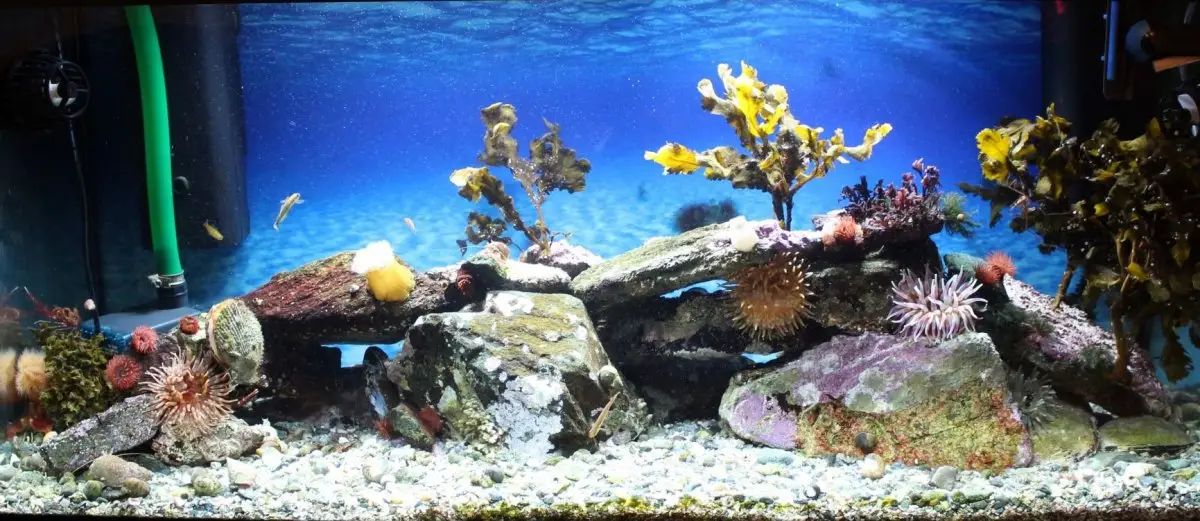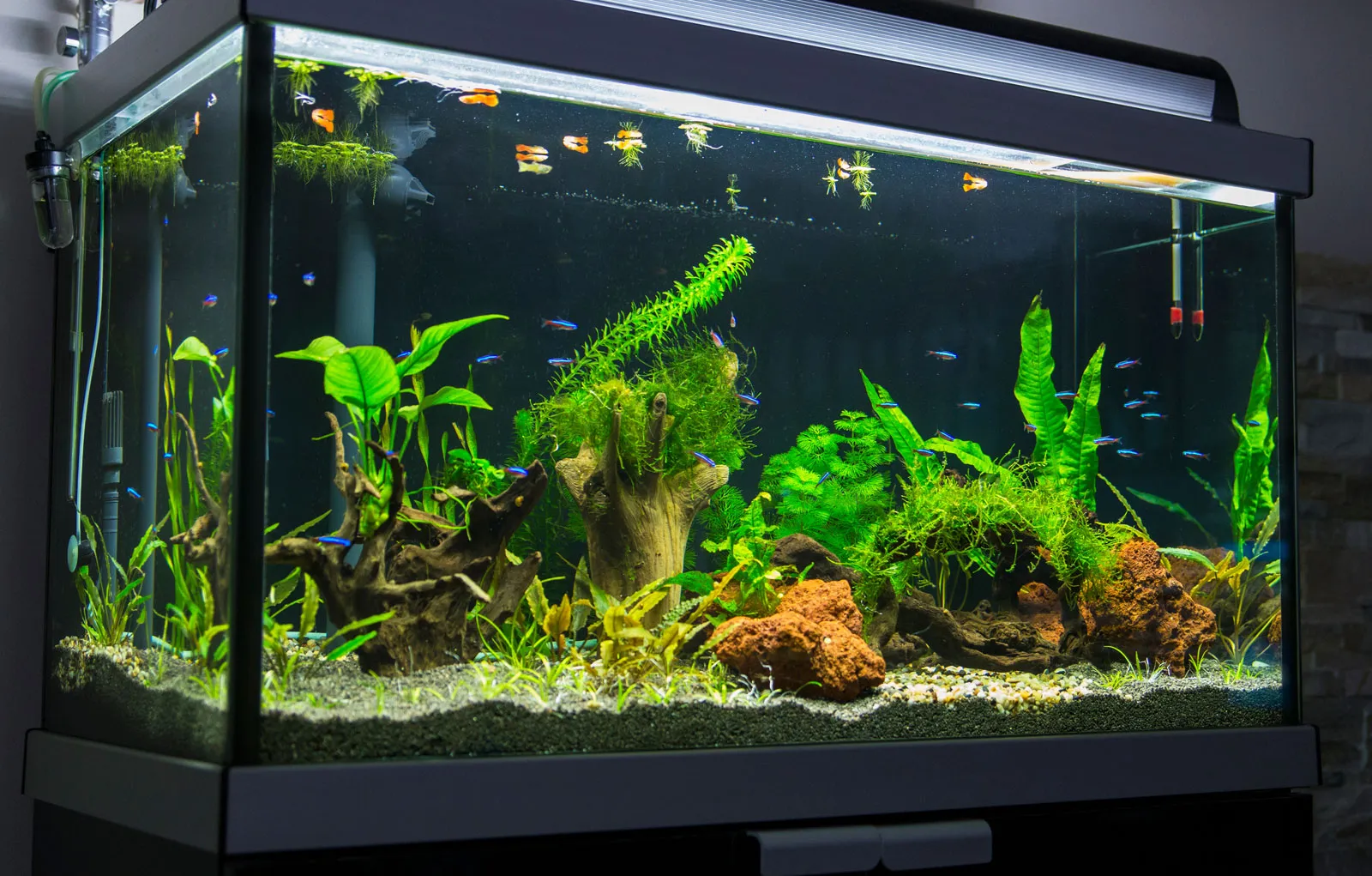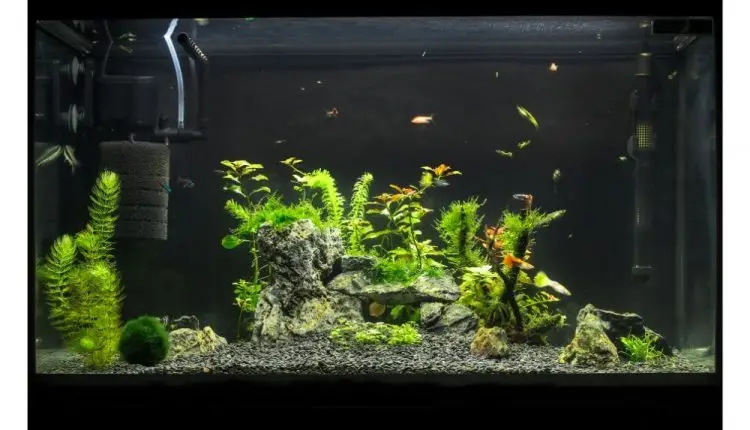Aquarium maintenance can sometimes be a challenging task, especially if you’re new to the world of fish-keeping.
However, by implementing some advanced techniques, you can ensure that your aquarium remains a healthy and thriving ecosystem for your aquatic pets.
In this article, we’ll explore various aspects of advanced aquarium maintenance, including understanding the aquarium ecosystem, advanced cleaning techniques, filtration systems, lighting techniques, and feeding techniques.
Understanding Aquarium Ecosystem

An aquarium ecosystem is a delicate balance of living organisms and their environment. It is crucial to understand the importance of maintaining this delicate balance to ensure the health and longevity of your aquarium inhabitants.
Creating and maintaining an aquarium ecosystem is not just about having a beautiful display of aquatic life; it is about creating a sustainable environment where your fish, plants, and invertebrates can thrive. Understanding the intricacies of this ecosystem will help you provide the best care for your aquatic pets.
Importance of Maintaining an Aquarium Ecosystem
1. Preserving Water Quality for Fish Health
Water quality is the lifeblood of your aquarium, directly impacting the health of your beloved fish species. Implementing biological filtration through the cultivation of beneficial bacteria is essential. These microorganisms work tirelessly to break down waste, ensuring that the tank’s water remains a pristine haven for your aquatic companions.
2. Balancing Act: Light, Space, and Water Parameters
Creating a harmonious habitat involves a delicate balance of elements. The right amount of light is crucial for the vitality of aquatic plants, but excessive illumination can lead to problematic algae growth. Providing adequate space for your fish to swim and hide contributes to their well-being, while closely monitoring water parameters such as pH levels and temperature ensures a thriving environment.
3. Preventing Overfeeding: A Common Pitfall
Overfeeding is a prevalent issue in aquarium maintenance, leading to an accumulation of uneaten food and subsequently, degraded water quality. Maintaining a watchful eye on feeding habits and implementing a strategic approach prevents overfeeding, contributing to the overall health of your aquatic ecosystem.
4. Tank Maintenance as Ritual for a Beautiful Aquarium
Routine tank maintenance is akin to a ritual that safeguards the aesthetics and health of your aquarium. Utilizing a gravel vacuum to eliminate debris and uneaten food, along with periodic water changes using treated water at the right temperature, ensures a clean and beautiful aquatic environment.
5. Size Matters: Opting for a Larger Tank
Choosing the right-sized aquarium is more than a matter of aesthetics; it directly impacts the stability of the ecosystem. A larger tank provides more room for your fish to swim and interact, mimicking a natural environment. This not only enhances their well-being but also contributes to the overall beauty of the aquarium.
The importance of maintaining an aquarium ecosystem goes beyond the superficial allure of a beautifully arranged tank. It’s about creating a thriving microcosm where fish and aquatic plants coexist in harmony.
By embracing advanced aquarium maintenance practices, you not only ensure the health and happiness of your aquatic companions but also cultivate a stunning and captivating underwater world.
Key Components of an Aquarium Ecosystem
Creating a thriving aquarium ecosystem is a nuanced art that involves a symphony of elements working together seamlessly. Let’s explore the key components that contribute to the health and vitality of your aquatic haven.
Advanced Aquarium Maintenance is the backbone of a flourishing aquarium. It goes beyond routine tasks and involves a deep understanding of the intricate balance required for the well-being of your aquatic environment.
Fish Species are the heartbeats of your underwater world. Whether you opt for the vibrant hues of Freshwater Fish or the exotic allure of Saltwater Fish, selecting the right species is a critical decision in establishing a harmonious ecosystem.
The Fish Tank itself is more than a glass enclosure; it’s a carefully crafted habitat. Regular Fish Tank Cleaning ensures that the environment remains pristine, free from Uneaten Food and unwanted debris that could compromise water quality.
Biological Filtration, driven by Beneficial Bacteria, is an essential process that breaks down harmful substances like Ammonia and maintains optimal Water Quality. This microbial workforce plays a pivotal role in safeguarding the Fish’s Health.
Aquatic Plants are not merely ornamental; they serve as both shelter and contributors to Biological Filtration. They absorb excess nutrients, discouraging undesirable Algae Growth and fostering a healthier ecosystem.
Balancing elements like Light is crucial. While it’s essential for the photosynthesis of Live Plants, Too Much Light can encourage algae. Strategic use of lighting enhances the overall aesthetics and well-being of your aquatic community.
Routine Tank Maintenance, including a Gravel Vacuum to eliminate debris, Water Changes with Treated Water, and monitoring Water Parameters like pH Levels and Water Temperature, ensures a stable environment.
A Larger Tank provides Adequate Space for your fish to swim and explore, mimicking their natural habitat. This, coupled with appropriate Tank Clean practices, contributes to keeping your Fish Happy.
An aquarium ecosystem is a delicate tapestry where each component, from the type of Fish chosen to the meticulous details of Maintenance, plays a crucial role. By understanding and respecting these elements, you create not just an aquarium but a living, thriving underwater world.
Advanced Cleaning Techniques

Maintaining cleanliness in your aquarium is crucial for the health and well-being of your fish. Besides regular cleaning, there are some advanced cleaning techniques you can implement to ensure a pristine environment for your aquatic pets.
When it comes to aquarium maintenance, regular water changes are essential. They play a vital role in removing accumulated waste, excess nutrients, and toxins from the tank. Ideally, you should perform partial water changes on a weekly or bi-weekly basis, depending on the specific requirements of your aquarium and its inhabitants.
During water changes, it’s important to use a dechlorinator to neutralize any harmful chemicals present in tap water. This ensures that the water is safe for your fish.
Additionally, investing in a siphon or gravel vacuum can greatly assist in the cleaning process. These tools allow you to remove any debris or waste that may have settled on the substrate, preventing them from decomposing and affecting water quality.
In addition to regular water changes, periodically deep cleaning your aquarium substrate is necessary to maintain a healthy environment. Over time, uneaten food, waste, and decaying plant matter can accumulate in the substrate, releasing harmful substances into the water.
One effective method of deep cleaning the substrate is by using a substrate vacuum. This tool gently suctions out any debris that may have settled in the substrate. It’s important to be cautious while using the vacuum to avoid disturbing the beneficial bacteria residing in the substrate, as they play a crucial role in maintaining a balanced ecosystem.
Another effective method of deep cleaning the substrate is to remove a portion of it and rinse it thoroughly before reintroducing it into the aquarium. This process helps to remove any accumulated waste and debris that may not be easily accessible with a substrate vacuum.
However, it’s important to note that removing too much substrate at once can disrupt the stability of the aquarium, so it’s best to do this gradually over multiple cleanings.
By incorporating these advanced cleaning techniques into your aquarium maintenance routine, you can ensure that your aquatic pets thrive in a clean and healthy environment. Remember to always prioritize the well-being of your fish and provide them with the best possible living conditions.
Advanced Filtration Systems
Filtration systems are critical for maintaining water clarity, removing pollutants, and ensuring optimal water quality for your aquarium inhabitants. By understanding the types of filtration systems available and optimizing their usage, you can significantly improve the overall health of your aquarium ecosystem.
When it comes to aquarium filtration, there are several types of filters to choose from, each with its own benefits and suitability for different aquarium setups. Let’s take a closer look at some of the most popular types:
Sponge Filters
Sponge filters are an excellent choice for smaller aquariums or breeding tanks. They provide both mechanical and biological filtration. The sponge acts as a mechanical filter, trapping debris and particles, while also providing a surface area for beneficial bacteria to colonize and break down harmful substances.
Canister Filters
Canister filters are known for their high-performance filtration capabilities. They are suitable for medium to large-sized aquariums and offer a combination of mechanical, biological, and chemical filtration. Water is drawn into the canister, where it passes through various filter media, effectively removing impurities and toxins.
Hang-on-Back Filters
Hang-on-back filters, also known as HOB filters, are popular among hobbyists due to their ease of installation and maintenance. These filters hang on the back of the aquarium and draw water up through a tube, passing it through filter media before returning it to the tank. HOB filters provide mechanical and biological filtration.
Wet/Dry Filters
Wet/dry filters, also called trickle filters, are commonly used in saltwater aquariums. These filters provide excellent biological filtration by exposing the water to a large surface area where beneficial bacteria can thrive. The water trickles down over filter media, allowing for efficient gas exchange and the removal of harmful substances.
Optimizing Filtration for Aquarium Health
To optimize filtration in your aquarium, it is essential to understand the biological, mechanical, and chemical filtration processes. Biological filtration relies on beneficial bacteria that break down harmful ammonia and nitrite into less toxic nitrate.
Mechanical filtration involves trapping debris and particles, preventing them from circulating in the water. Chemical filtration utilizes activated carbon or other media to remove impurities and toxins from the water.
In addition to choosing the right type of filter for your aquarium, there are other steps you can take to ensure optimal filtration efficiency. Regularly inspecting and cleaning your filtration system, replacing filter media when necessary, and ensuring proper water flow are all essential maintenance tasks. Monitoring water parameters, such as ammonia, nitrite, nitrate levels, and pH, will help you determine if adjustments need to be made to your filtration setup.
Remember, each aquarium is unique, and the filtration requirements may vary depending on the type of fish, plants, and other inhabitants in your tank.
By understanding the different types of filtration systems available and implementing proper maintenance practices, you can create a healthy and thriving aquatic environment for your aquarium inhabitants.
Aquarium Lighting Techniques
Lighting is not only crucial for the aesthetic appeal of your aquarium but also plays a vital role in the health and well-being of your aquatic plants and fish. By understanding the role of light in aquariums and choosing the right lighting, you can create an optimal lighting environment to support the growth and development of your aquarium inhabitants.
Understanding the Role of Light in Aquariums
Light is essential for photosynthesis, a process through which aquatic plants convert light energy into chemical energy. Adequate lighting enables plants to grow, produce oxygen, and absorb excess nutrients, promoting a healthy balance in the aquarium ecosystem.
Lighting also influences the behavior, coloring, and overall well-being of fish. Some species may require specific lighting conditions to thrive, while others may be more adaptable to different lighting intensities.
Choosing the Right Lighting for Your Aquarium
When choosing lighting for your aquarium, consider the specific requirements of your aquatic plants and fish species. Different types of lighting, such as fluorescent, LED, and metal halide, offer varying intensity levels and color spectrums.
Fluorescent lights are commonly used and provide a good balance between affordability and performance. LED lights are energy-efficient and offer versatile lighting options, including adjustable intensities and color spectrums. Metal halide lights are powerful, making them suitable for aquariums with light-demanding plants or coral reefs.
Regardless of the lighting system you choose, remember to provide a consistent photoperiod for your aquarium inhabitants, mimicking their natural day-night cycles. This will help regulate their biological rhythms and promote a stable environment.
Advanced Feeding Techniques

Proper nutrition is vital for the health and growth of your aquarium inhabitants. By understanding the nutritional needs of your fish and implementing advanced feeding techniques, you can ensure they receive a well-balanced diet that promotes their overall well-being.
Nutritional Needs of Aquarium Life
Different fish species and aquatic pets have varying nutritional requirements. Some fish are herbivorous, requiring a diet rich in plant matter, while others are omnivorous or carnivorous and require a more protein-rich diet.
To meet the nutritional needs of your fish, provide a balanced diet consisting of high-quality fish food. It is recommended to offer a variety of food items, such as flakes, pellets, frozen or live foods, to ensure a diverse nutrient intake.
Timing and Quantity of Feed
When it comes to feeding, establishing a regular feeding schedule and controlling the quantity of food is crucial. Overfeeding can lead to excessive waste accumulation, poor water quality, and potential health issues for your fish.
Feed your fish small portions that they can consume within a few minutes, removing any uneaten food afterward. It is better to underfeed slightly than overfeed, as fish can survive for extended periods without food.
Remember to observe your fish while feeding to ensure that all individuals are receiving their fair share. Some fish may be more timid or slow eaters, so providing additional feeding spots or separating more aggressive eaters can ensure a balanced feeding process.
Conclusion
In conclusion, advanced aquarium maintenance techniques involve understanding the aquarium ecosystem, implementing advanced cleaning techniques, optimizing filtration systems, choosing suitable lighting, and providing a nutritious diet for your aquatic pets.
By incorporating these techniques into your regular maintenance routine, you can create a thriving and healthy aquarium ecosystem that will be a joy to behold and provide a safe and vibrant home for your fish.


